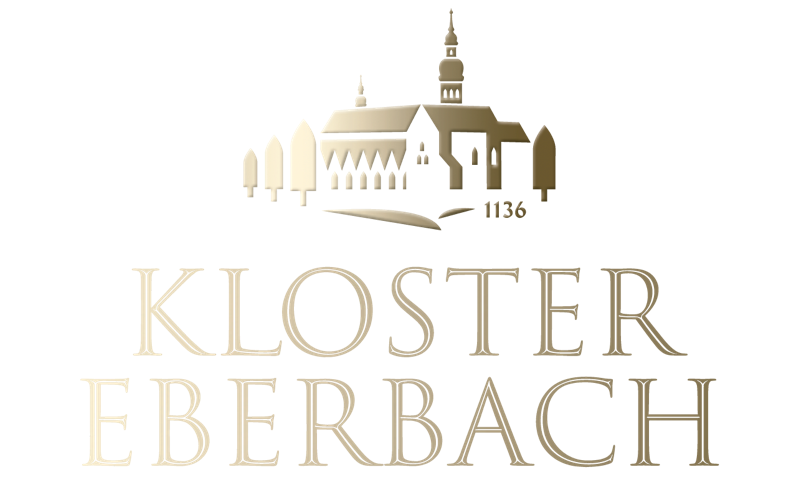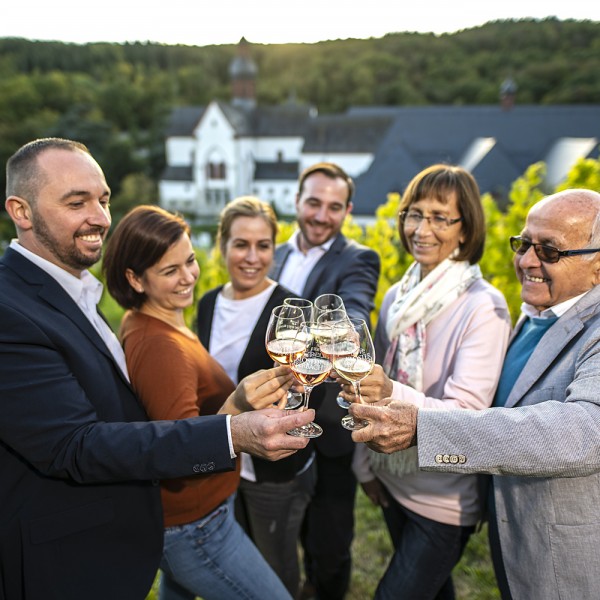Treasured Wines
The establishment of the cabinet cellar created treasured wines as early as the 18th century, which can still be found today in the monastery's treasury and represent the most valuable collection of German wines in the entire world.
Eberbach was affected by secularisation in 1803. The last monks left the monastery, and officials of the new owner, Prince Friedrich August of Nassau-Usingen, were already roaming the rooms in order to put everything of value up for sale quickly. Although the spiritual life of the monastery had now come to an end, the upkeep of wine-growing carried on. The base stock of vineyards was actually increased. Soon the Duke established wines from the ducal Nassau cabinet cellar as a permanent fixture at the tables of Europe's noble houses.

Carrying on the legacy of the monks
All secular successors at Kloster Eberbach grew into the role of the Eberbach monks.
They saw themselves as committed to the great tradition that had grown over seven centuries. In this way, the winery set important standards with its exemplary functions. This included new approaches to natural viticulture, gentle vinification, innovative marketing and, increasingly, the development of modern marketing structures, for which a forward-looking foundation was created as early as 1806 with the introduction of wine auctions.

12th to 16th Century
1136
Founding of the monastery by St. Bernard - Entry of the first 13 Cistercian monks from Clairvaux.
**12th - 13th century
Kloster Eberbach develops into the most important Cistercian economic complex in the German Middle Ages - wine becomes the first-rate commodity and thus the economic basis of the monastery.
**13th - 16th century
Enormous development of the winery - The winery becomes the largest on German soil and cultivates areas in the Rheingau and in Rheinhessen as well as on the Nahe, on the Middle Rhine and on the Bergstrasse.
17th and 18th Centuries
**17th century
Looting during the Thirty Years' War - escape of the monks from Swedish occupation troops for 3 years.
1730
Establishment of the cabinet cellar for vinified treasures - birthplace of the term "cabinet" on later wine labels
1753
Noble Rotten Grapes - The advantages of late harvested noble rotten grapes are recorded and praised in the cellar book.
**18th century
Construction of a wall around the entire Steinberg - To protect against grape thieves, the structure is built around the oldest monopollage in the world.
19th Century
**19th century
Secularisation- ecclesiastical principalities and monasteries are stripped of their secular power and deprived of their possessions. Kloster Eberbach is transferred to Friedrich August von Nassau-Usingen.
1803
19 September Dissolution of the abbey and establishment of a princely wine cellar.
1806
Introduction of wine auctions - In order to open up new sales channels, the Duke of Nassau has wines auctioned for the first time at Kloster Eberbach.
Establishment of the treasury "Herzoglich Nassauischer Cabinetskeller". Preserved stocks of bottled wine date back to 1706.
1866
Establishment of the most important royal Prussian wine-growing domain administration. After the Duchy of Nassau lost the German War in 1866 on the side of Austria, it was annexed by Prussia. High investments and the continuing spirit of innovation enriched the winegrowing business with valuable sites (including the world-famous Baiken) and forward-looking farming methods. To improve the soil, the lords of the domain had soon excavated rocks, filled in plots and built vineyard walls - essentially the landscape of today's most significant sites.
20th Century
**20th century
Most valuable vineyard estate of all German wineries. No other winery has a larger vineyard area within the sites that were given the highest category in the world's oldest site map in 1867. Undeniably, the vineyard sites are still the most valuable in Germany today.
1900
Rauenthaler Baiken - One of the most valuable vineyard sites in Germany. In 1900, the Prussians bought a large estate in the Rauenthaler Berg for 1.2 million gold marks (approx. 7.5 million euros). Among them were the best plots in Baiken.
1910
Co-founder of the Association of Natural Wine Auctioneers - today's "Association of Prädikat Wine Estates" (VDP). Andreas Czéh, director of the Royal Prussian Wine Domain, together with 15 other gentlemen, contributed significantly to sealing a lasting promise of quality for exquisite wine enjoyment.
1924
A model estate - the Domäne Assmannshausen - at the foot of the Höllenberg was built by the Prussians in 1924. The most modern red wine cellar of its time. Thanks to the intensive selection work of the Prussian state domain, the severely endangered cultivation of Pinot Noir could thus be continued. From the very beginning, the domain's wine cellar was entirely dedicated to the cultivation of red wine; its principles remain the standard to this day. The red wine tradition of the Kloster Eberbach wine estate goes back to the founding years of the former Cistercian abbey. Thus, in the 12th century, the monks brought the sophisticated Burgundy grape from their homeland in Burgundy and cultivated it in the Rheingau.
1928
Establishment of the Rauenthal domain in the middle of the Rauenthaler Berg - pioneering consolidation and development of cultivation methods.
1945
The monastery becomes the property of the State of Hesse, administered by the Hessian State Wine Estates.
1946
Domäne Bergstraße becomes part of the Hessian State Wine Estates - The vineyard in the former Rebmuttergarten, the Heppenheim Centgericht. Like the Rheingau domain vineyards, the bond of history links the Bergstrasse domain with Kloster Eberbach . The domain in its present form was founded in 1904 by the Grand Duke of Hesse-Darmstadt. The domain has always provided impulses for the development of local viticulture.
Modern Times
1998
Transfer of the monastery grounds into the ownership of a non-profit foundation under public law - The Kloster Eberbach Foundation and the winery make the unique wine and cultural history of the abbey a tangible experience for visitors and guests alike
2003
Transfer of the winery to the "Hessische Staatsweingüter GmbH Kloster Eberbach" Business headquarters remain Kloster Eberbach, so that the winery is still located at the place of its roots.
2008
Inauguration of the Steinberg cellar - a model of German winery architecture. The connection between unique tradition, uncompromising quality philosophy and innovation at the highest level.




